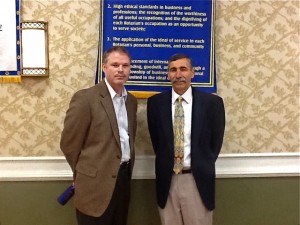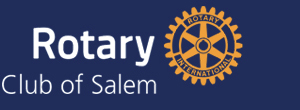Club Meeting – February 20th, 2014
 Concussions: More Than Getting Your “Bell Rung” – Jim Buriak Director of Athletic Training at Roanoke College and Dr. John Creasy Associate Professor of Health and Human Performance spoke to us to day on a topic that has merited greater attention at all levels of sports. From youth athletics to professional sports the diagnosis and treatment of concussions has become a topic of concern and increased study.
Concussions: More Than Getting Your “Bell Rung” – Jim Buriak Director of Athletic Training at Roanoke College and Dr. John Creasy Associate Professor of Health and Human Performance spoke to us to day on a topic that has merited greater attention at all levels of sports. From youth athletics to professional sports the diagnosis and treatment of concussions has become a topic of concern and increased study.
The 4th International Conference on Concussion in Sport Held in Zurich, November 2012 determined a concussion is a subset of a mild traumatic brain injury (mTBI). Concussion is the historic term representing low-velocity injuries that cause brain “shaking” resulting in clinical symptoms and that are not related to pathological injury. The definition of concussion was defined as follows:
- Concussion is a brain injury and is defined as a complex pathophysiological process affecting the brain, induced by biomechanical forces. Several common features that incorporate clinical, pathologic and biomechanical injury constructs that may be utilized in defining the nature of a concussive head injury include:
- Concussion may be caused either by a direct blow to the head, face, neck or elsewhere on the body with an ”impulsive’ force transmitted to the head.
- Concussion typically results in the rapid onset of short-lived impairment of neurological function that resolves spontaneously. However, in some cases, symptoms and signs may evolve over a number of minutes to hours.
- Concussion may result in neuropathological changes, but the acute clinical symptoms largely reflect a functional disturbance rather than a structural injury and, as such, no abnormality is seen on standard structural neuroimaging studies.
- Concussion results in a graded set of clinical symptoms that may or may not involve loss of consciousness. Resolution of the clinical and cognitive symptoms typically follows a sequential course. However, it is important to note that in some cases symptoms may be prolonged.
Some highlights of the various points of interest stated by Buriak and Cleasy were…
- Follow-up after the initial injury is essential as symptoms can last a long time.
- Peer group pressure, the “culture of resistance” to admit an incapacity to resume competition is a real hindrance. It makes a difficult diagnosis even more challenging when the athlete/patient is not honest in their replies to the trainer or physician questions.
- Athletic trainers are now giving each athlete physical and cognitive tests to create individual benchmarks upon which they can better evaluate post-injury test results and determine the true extent of injury sustained by the player.
- During recovery an athletes must “rest” their mind. A concussion often causes an individual to loss their ability to focus. During the recovery period loss of fitness due to inactivity and loss of focus can create heightened anxiety in the athletes.
- An athlete must be asymptomatic for 7 days of a structured evaluation regimen before they should be allowed to compete again.
Current research and treatments as conducted and implemented by our speakers give comfort to parents of young athletes and mature athletes that their love of sports will not result in long term negative side effects.
Jim Buriak recommended these two links to gain additional information about concussions…
Consensus Statement on Concussion in Sport – PDF file
NCAA web page on Concussions

